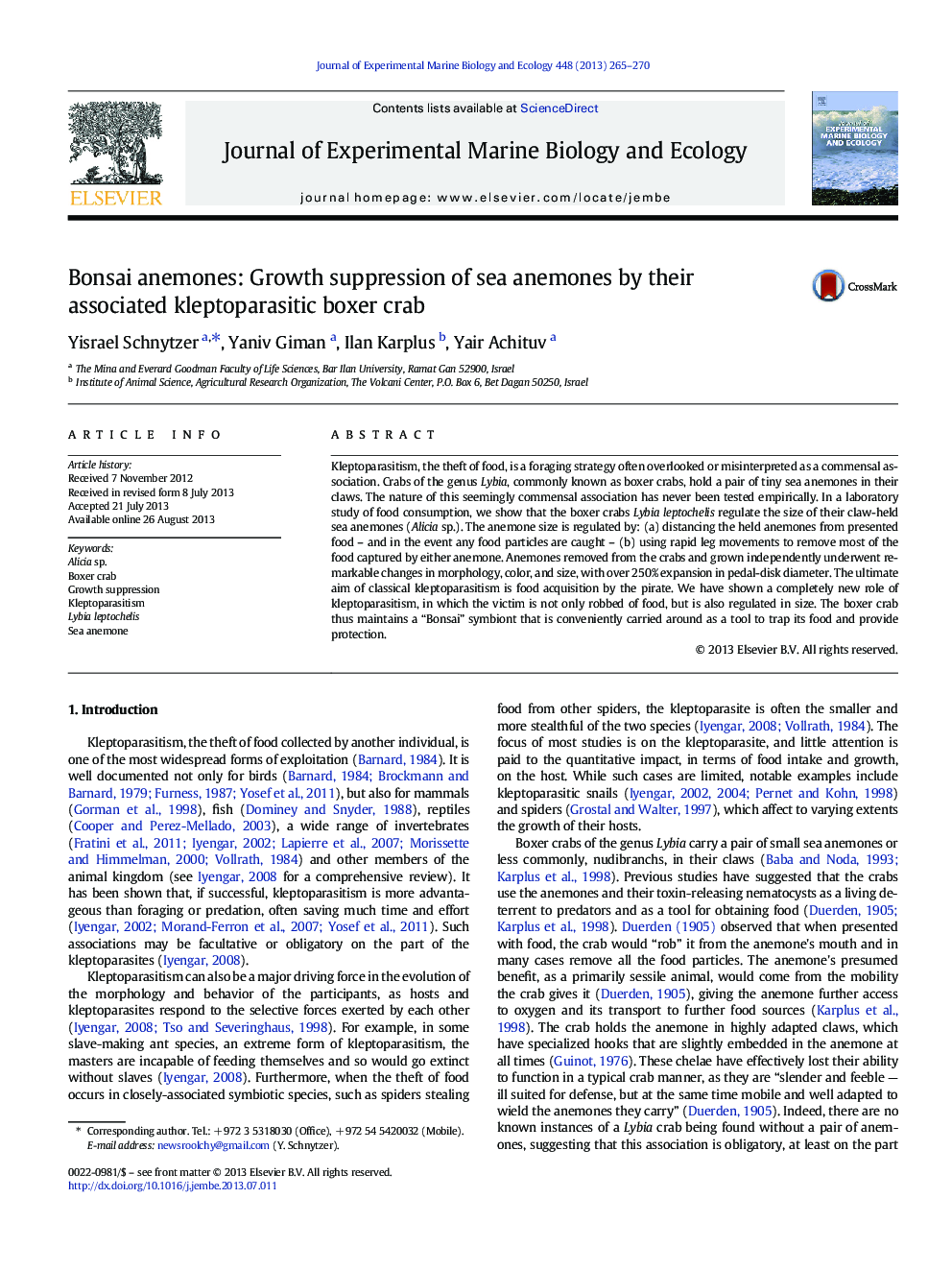| Article ID | Journal | Published Year | Pages | File Type |
|---|---|---|---|---|
| 6304405 | Journal of Experimental Marine Biology and Ecology | 2013 | 6 Pages |
Abstract
Kleptoparasitism, the theft of food, is a foraging strategy often overlooked or misinterpreted as a commensal association. Crabs of the genus Lybia, commonly known as boxer crabs, hold a pair of tiny sea anemones in their claws. The nature of this seemingly commensal association has never been tested empirically. In a laboratory study of food consumption, we show that the boxer crabs Lybia leptochelis regulate the size of their claw-held sea anemones (Alicia sp.). The anemone size is regulated by: (a) distancing the held anemones from presented food - and in the event any food particles are caught - (b) using rapid leg movements to remove most of the food captured by either anemone. Anemones removed from the crabs and grown independently underwent remarkable changes in morphology, color, and size, with over 250% expansion in pedal-disk diameter. The ultimate aim of classical kleptoparasitism is food acquisition by the pirate. We have shown a completely new role of kleptoparasitism, in which the victim is not only robbed of food, but is also regulated in size. The boxer crab thus maintains a “Bonsai” symbiont that is conveniently carried around as a tool to trap its food and provide protection.
Related Topics
Life Sciences
Agricultural and Biological Sciences
Aquatic Science
Authors
Yisrael Schnytzer, Yaniv Giman, Ilan Karplus, Yair Achituv,
